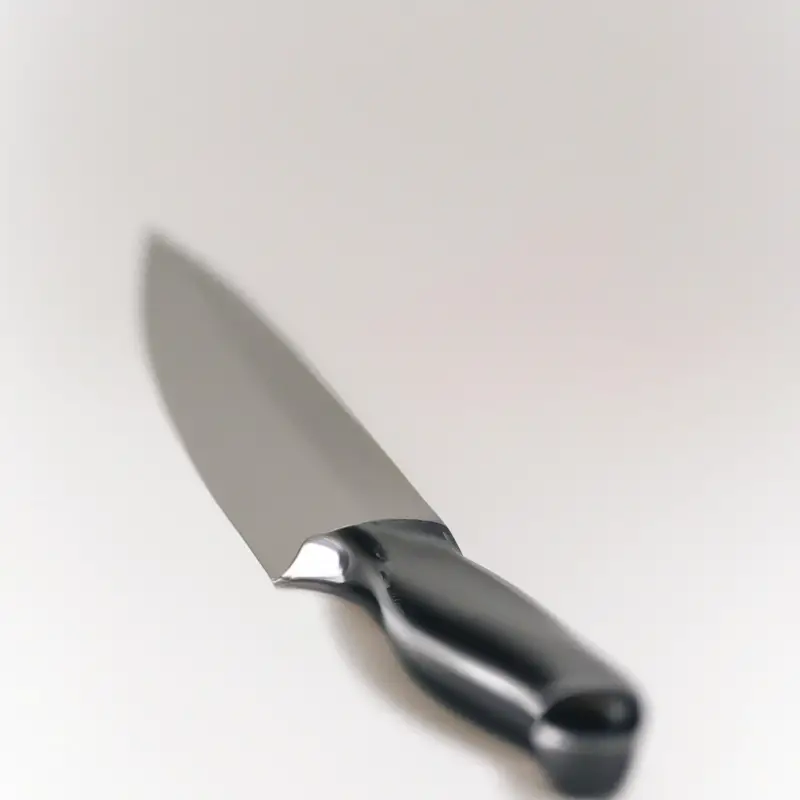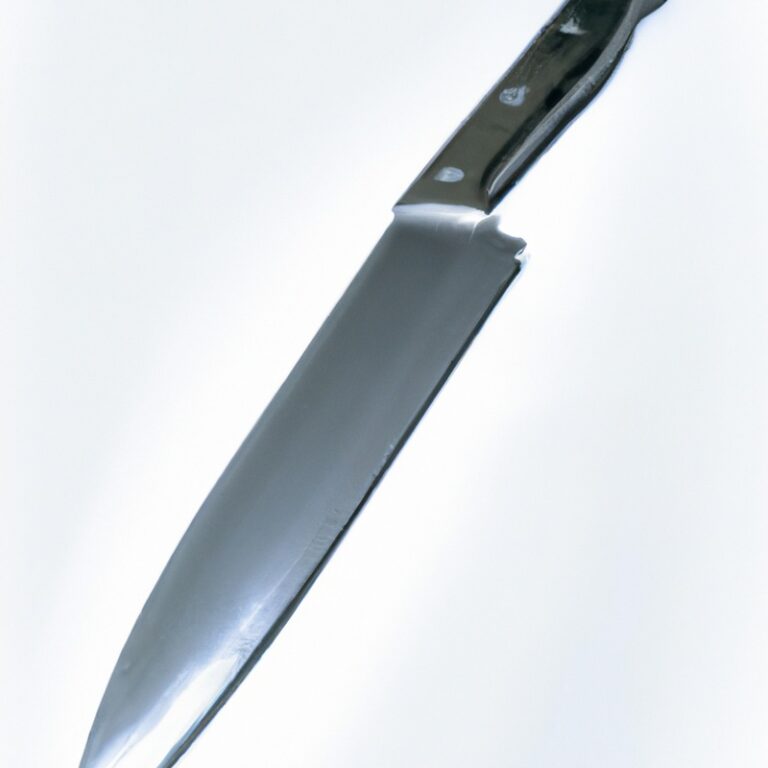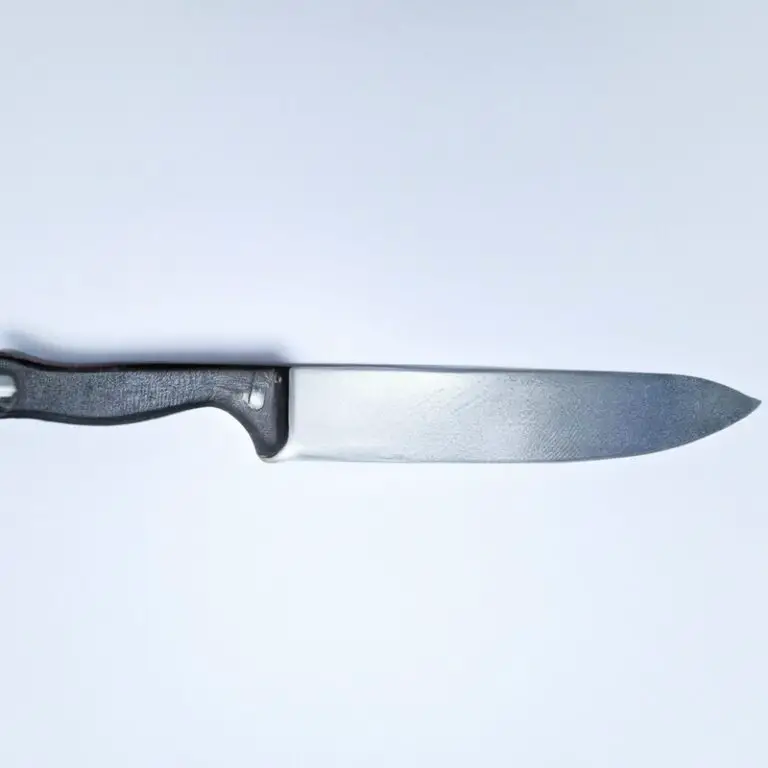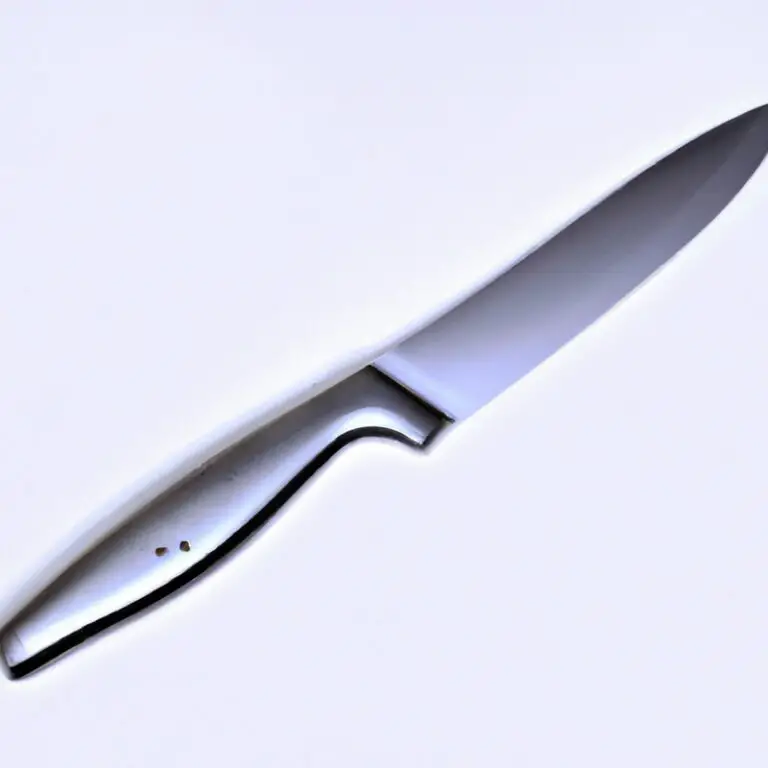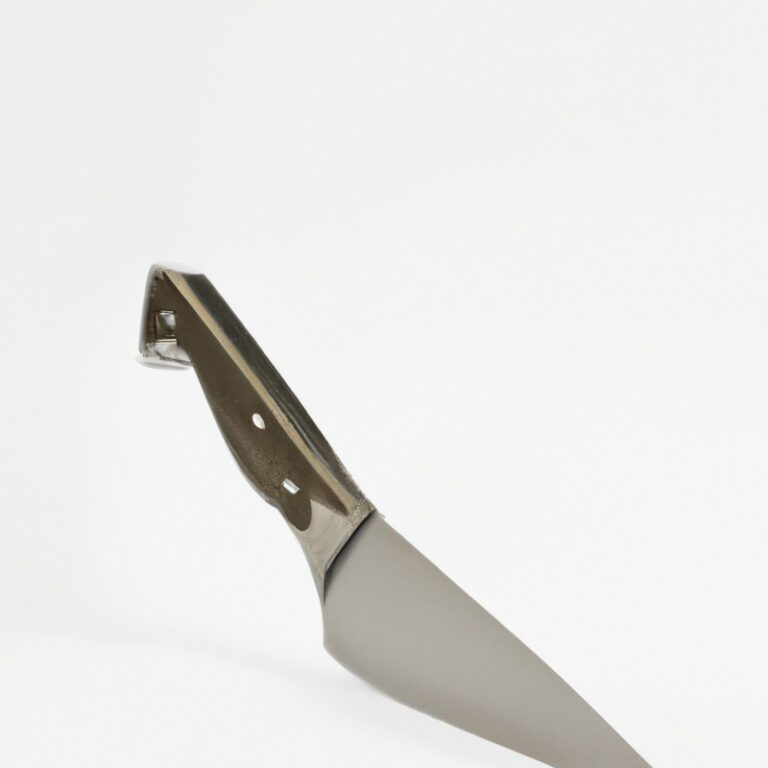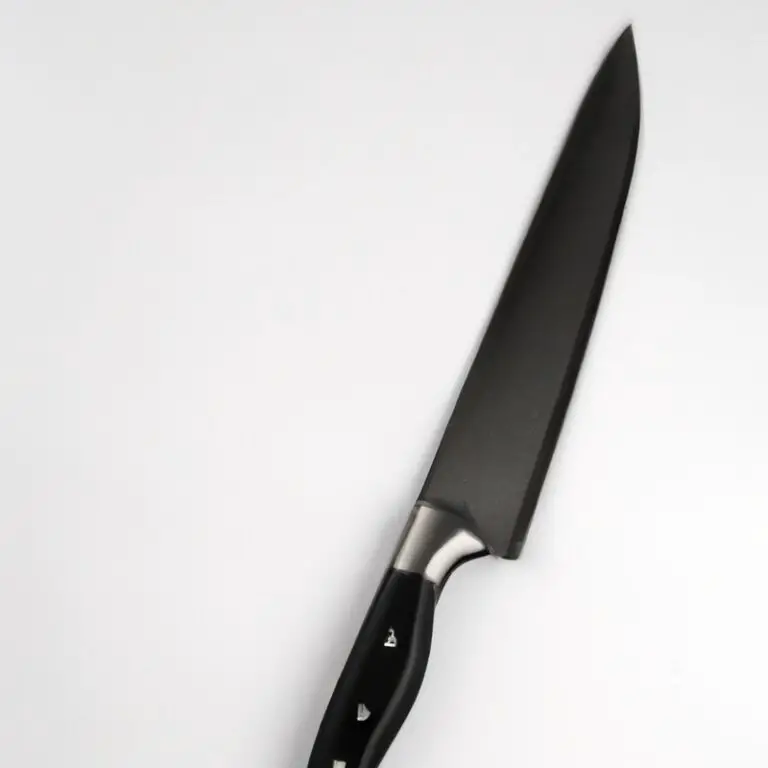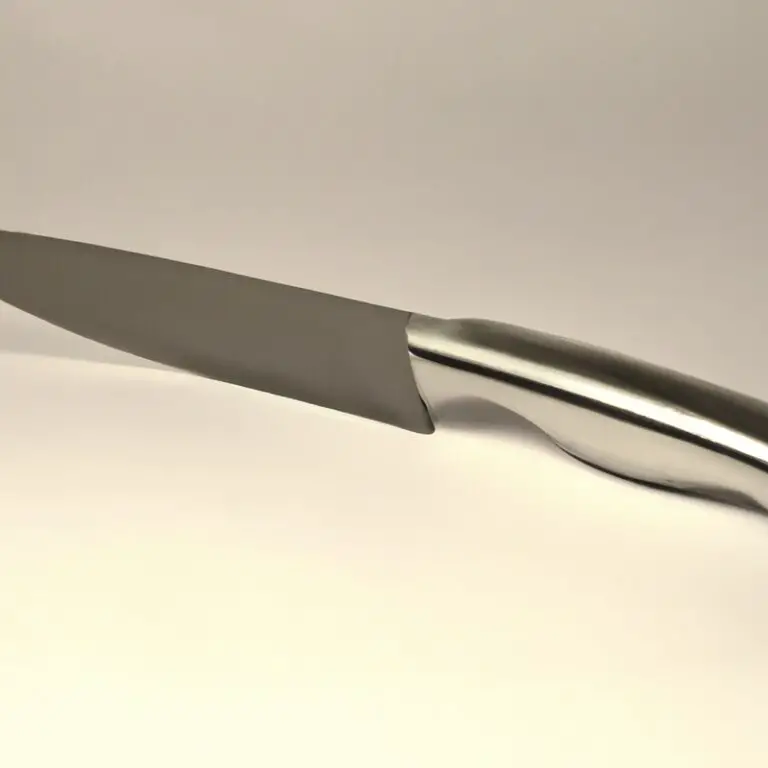What Makes Knife Steel Durable?
Key Takeaways:
- High carbon content increases the durability of knife steel.
- The right heat treatment process enhances the durability of knife steel.
- Chromium improves the corrosion resistance of knife steel.
- Proper maintenance and care are essential for maintaining the durability of knife steel.
Have you ever wondered what makes some knife blades incredibly durable, while others seem to lose their edge after just a few uses?
Well, you’ve come to the right place! In this article, I’ll be delving into the fascinating world of knife steel durability.
We’ll explore the factors that influence it, such as hardness, toughness, corrosion resistance, and wear resistance.
We’ll also take a look at different types of knife steel, the importance of heat treatment, and how steel composition affects durability.
Plus, I’ll share some tips on maintaining knife steel durability and choosing the right knife steel for your needs.
So, let’s get started and unlock the secrets to long-lasting, reliable knives!
| Factors | Description |
|---|---|
| Steel Composition | High carbon content, alloying elements |
| Hardness | High Rockwell hardness |
| Toughness | Resistance to cracking or breaking |
| Wear Resistance | Ability to retain sharpness |
| Corrosion Resistance | Protection against rust and corrosion |
| Heat Treatment | Optimal heating and cooling processes |
Factors That Influence Knife Steel Durability
Hardness
Hardness is a key factor in knife steel durability.
It refers to the material’s ability to resist deformation when subjected to a force.
A harder knife steel will generally hold its edge longer and be less prone to bending or breaking.
Various scales, like Rockwell hardness, are used to measure this property.
Different knife steels have different optimal levels of hardness, depending on their composition and intended use.
It’s important to strike a balance between hardness and other properties like toughness to ensure the knife performs well in real-world conditions.
Toughness
Toughness is a critical characteristic of knife steel durability. It refers to the steel’s ability to absorb energy and withstand impacts without fracturing or breaking.
A tough knife steel can endure rigorous use, such as cutting tough materials or encountering hard surfaces.
Factors like steel composition and heat treatment play a role in determining a knife’s toughness. High carbon steels tend to be tougher than stainless steels, while proper heat treatment methods, like tempering, can enhance toughness.
Knife design also influences toughness, as a thicker blade and a fuller grind can provide more strength.
With toughness in mind, you can choose a knife steel that suits your needs for durability and resilience.
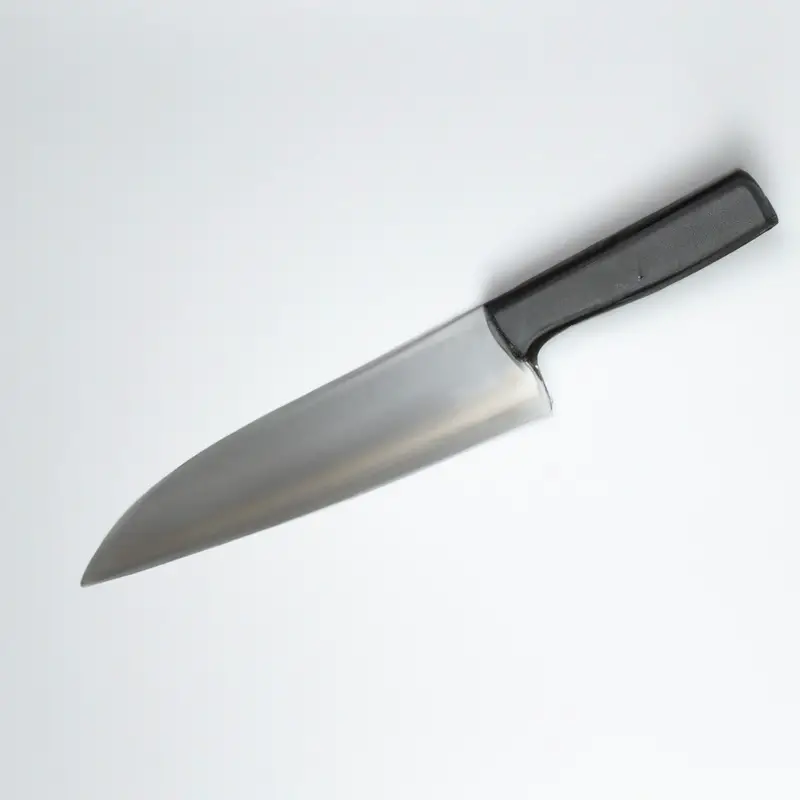
Corrosion Resistance
Corrosion resistance is a key factor in determining the durability of knife steel.
It refers to the ability of the steel to resist oxidation and deterioration when exposed to moisture, acids, and other corrosive elements.
High-quality knife steel is often treated with different methods, such as adding chromium, to enhance its corrosion resistance.
Stainless steel, for example, is known for its excellent corrosion resistance due to the high chromium content.
Corrosion can weaken the steel and affect its performance, so choosing a steel with good corrosion resistance is important for maintaining the longevity of your knife.
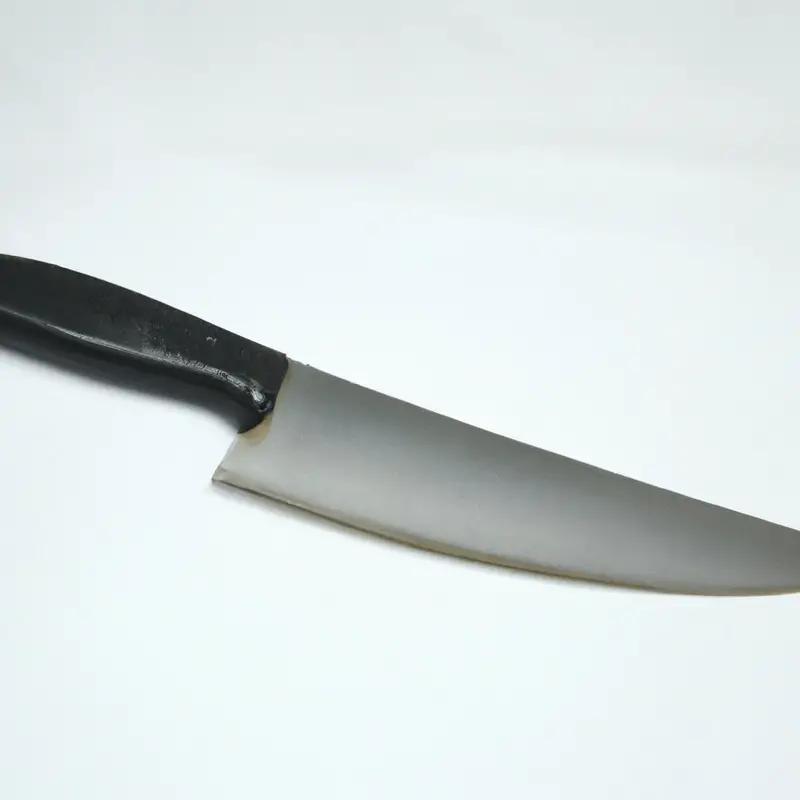
Wear Resistance
Wear resistance is a key factor in determining the durability of knife steel. Essentially, wear resistance refers to a steel’s ability to withstand abrasive forces and maintain its sharpness over time.
To achieve high wear resistance, steel is often hardened through heat treatment processes like quenching and tempering.
Additionally, the composition of the steel, particularly the presence of carbides, can contribute to its wear resistance. It’s important to consider wear resistance when choosing a knife steel to ensure it can withstand the demands of your intended usage.
Different Types of Knife Steel
Stainless Steel
Stainless steel is a popular choice for knife blades due to its excellent durability.
It is a type of steel that contains a minimum of 10.5% chromium, which creates a protective layer on the surface, making it resistant to corrosion and staining.
This makes stainless steel knives easier to maintain and ideal for use in wet or humid conditions.
Stainless steel also offers good overall toughness and can be sharpened to a fine edge.
However, it may not have the same level of hardness and wear resistance as other types of steel.
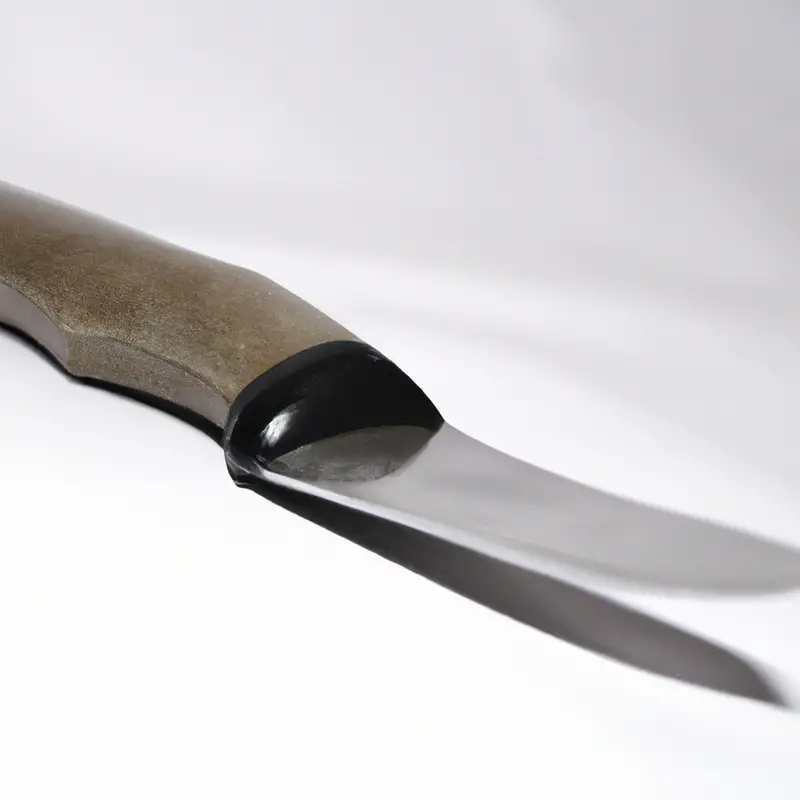
Carbon Steel
Carbon steel is a popular choice for knives due to its durability.
It is made by combining iron and carbon, which gives it excellent strength.
Carbon steel blades can hold a sharp edge for a long time and are resistant to wear.
However, they are more prone to corrosion, so proper care is essential.
Regular cleaning and drying after use can help maintain the durability of carbon steel knives.
Additionally, regular sharpening will keep the blade in optimal condition.
Careful storage and handling will also prevent unwanted damage.
Tool Steel
Tool steel is a type of steel specifically designed for making tools. It is known for its exceptional durability and strength, which makes it ideal for applications that require high levels of toughness, wear resistance, and heat resistance.
Tool steel is often used in industries such as manufacturing, construction, and automotive.
It can withstand heavy impact and is resistant to deformation, making it reliable for cutting, drilling, and shaping materials. Different types of tool steel exist, each with specific properties and advantages, so it’s essential to choose the right one for your specific tooling needs.
Heat Treatment and Durability
Annealing
Annealing is a heat treatment process used to improve the durability of knife steel.
During annealing, steel is heated to a specific temperature and then slowly cooled.
This process relieves internal stresses and softens the steel, making it easier to work with and less prone to cracking or breaking.
Annealing also refines the grain structure of the steel, enhancing its overall strength and toughness.
By subjecting knife steel to annealing, it becomes more resilient, ensuring that it can withstand the demands of heavy use without losing its durability or performance.
Quenching
Quenching is a crucial step in the heat treatment process of knife steel.
It involves rapidly cooling the heated steel to increase its hardness.
This is achieved by immersing the steel in a quenching medium, such as oil or water, which cools it down quickly.
The rapid cooling helps to transform the steel’s crystal structure, making it harder and more durable.
Quenching also helps to prevent the formation of undesirable phases, such as pearlite, which can affect the steel’s strength and toughness.
Proper quenching techniques and mediums are essential to achieve the desired hardness and durability in knife steel.
Tempering
Tempering is a crucial step in the heat treatment process of knife steel. It involves heating the steel to a specific temperature and then cooling it slowly.
This process helps to balance the hardness and toughness of the steel, making it more durable.
Tempering also reduces internal stresses in the steel, making it less prone to cracking or breaking. The exact tempering temperature and duration depend on the type of steel and the desired properties.
Properly tempered knife steel will have improved strength, flexibility, and resistance to wear and impact.
How Steel Composition Affects Durability
Carbon Content
Carbon content is a key factor that greatly influences the durability of knife steel.
The amount of carbon in the steel determines its hardness and strength.
Higher carbon content typically results in a harder and more wear-resistant blade.
However, it’s important to strike a balance, as too much carbon can also make the steel brittle and less tough.
Manufacturers carefully adjust the carbon content to achieve the desired balance between hardness and toughness for different applications.
Alloying Elements
In knife steel, alloying elements play a crucial role in determining durability.
These elements, such as chromium, molybdenum, and vanadium, are added to enhance specific properties of the steel.
For example, chromium increases corrosion resistance, while molybdenum and vanadium improve hardness and wear resistance.
The combination of different alloying elements creates a steel that is well-balanced and suited for various cutting tasks.
By understanding the effects of alloying elements, you can choose a knife steel that meets your specific needs.
Heat Treatability
Heat treatability is a key factor in determining the durability and performance of knife steel.
It refers to how well a particular type of steel responds to heat treatment processes, such as annealing, quenching, and tempering.
Proper heat treatment can significantly improve the hardness, toughness, and overall strength of the steel, making it more resistant to wear, chipping, and deformation.
Different types of steel have varying levels of heat treatability, so it’s essential to choose a steel that can be effectively heat treated to ensure long-lasting durability.
Knife Design and Durability
Blade Shape
Blade shape plays a significant role in the durability of a knife.
The shape affects how the knife cuts, handles, and fits into specific tasks.
Straight edge blades are versatile and ideal for general slicing and cutting.
Drop point blades have a strong point and are great for controlled cutting and controlled piercings.
Tanto blades are known for their strength and are suited for heavy-duty tasks.
Wharncliffe blades have a flat edge and are suitable for precise cutting and slicing.
Selecting the right blade shape for your intended use will contribute to the durability and effectiveness of your knife.
Blade Thickness
Blade thickness is an important factor in knife steel durability. A thicker blade provides more strength and resistance to bending or breaking.
It can withstand heavy-duty tasks and is ideal for chopping or prying.
On the other hand, a thinner blade allows for more precise cutting and slicing. It may not be as strong, but it offers better control and agility.
Choosing the right blade thickness depends on your intended use for the knife.
Blade Grind
Blade grind refers to the shape and angle of the blade’s cutting edge. It plays a crucial role in the performance and durability of a knife.
There are different types of blade grinds, each with its own strengths and weaknesses.
For instance, a flat grind provides excellent slicing performance, while a hollow grind offers better cutting efficiency. A convex grind is known for its durability and strength.
Choosing the right blade grind depends on your intended use and personal preferences.
It’s important to consider factors such as the type of tasks you’ll be performing and the materials you’ll be cutting.
Maintaining Knife Steel Durability
Proper Cleaning and Drying
To ensure the durability of your knife steel, proper cleaning and drying are essential. Here are a few tips to keep in mind:
- Clean your knife immediately after use. Use mild dish soap and warm water to remove any food particles or dirt. Avoid using harsh cleansers as they can damage the steel.
- Gently scrub the blade with a soft sponge or cloth. Pay attention to the edge, where most of the residue accumulates. Be careful not to scrub too hard, as it can scratch the steel.
- Rinse the knife thoroughly to remove any soap residue.
- Dry the knife completely using a soft towel. Make sure to dry both the blade and the handle thoroughly to prevent any moisture from lingering.
- Store your knife in a safe and dry place. Avoid leaving it in a damp location or throwing it in a drawer with other utensils, as it can lead to moisture buildup and potential rusting.
Regular Sharpening
Regular sharpening is essential for maintaining the durability of knife steel.
Sharpening helps to maintain the sharpness of the blade, ensuring efficient cutting and reducing the risk of accidents.
By sharpening your knife regularly, you can remove any dullness and restore its cutting performance.
It also helps to prevent the blade from becoming chipped or damaged.
Regular sharpening can be done using a sharpening stone, honing rod, or an electric sharpener.
It is important to follow the appropriate sharpening technique for your specific knife steel to ensure optimal results.
By incorporating regular sharpening into your knife maintenance routine, you can prolong the lifespan and functionality of your blades.
Safe Storage and Handling
Safe storage and handling are important factors in maintaining the durability of knife steel.
To ensure safe storage, it’s best to store knives in a protective sheath or blade cover to prevent accidental contact and damage.
Additionally, avoiding exposure to extreme temperatures and humidity levels can help prevent rust and corrosion.
When handling knives, it’s important to use them for their intended purposes and avoid activities that could cause excessive stress or impact on the blade.
Taking these precautions will help extend the lifespan of your knife steel.
Choosing the Right Knife Steel for Your Needs
Consider Your Usage
Consider Your Usage When choosing the right knife steel for your needs, it’s important to consider how you will be using the knife. Are you using it for everyday cooking tasks, outdoor adventures, or professional culinary work?
For everyday tasks that involve cutting fruits, vegetables, and smaller food items, stainless steel with high corrosion resistance is a good choice.
It is easy to maintain and won’t rust easily. If you’re an outdoor enthusiast or need a knife for tougher tasks like carving wood or hunting, a high-carbon steel knife with good toughness and wear resistance may be more suitable.
Ultimately, your usage will determine the type of steel that will best suit your needs.
Consider the specific tasks you’ll be performing with the knife to ensure you choose a durable steel that can withstand the demands of your activities.
Price Range and Budget
When considering knife steel durability, it’s important to factor in your price range and budget.
Different types of steel come at varying price points, so it’s essential to find the right balance between quality and affordability.
High-end steels like powdered or exotic alloys can be quite expensive, while budget-friendly options may sacrifice some durability.
Assess your needs and allocate a budget that suits your requirements.
Keep in mind that there are often good options available within different price ranges, so it’s worth doing some research to find the best value for your money.
Personal Preferences
Personal preferences play a significant role in choosing the right knife steel.
Some people prefer stainless steel for its corrosion resistance and ease of maintenance, while others favor carbon steel for its sharpness and edge retention.
Your usage and intended tasks should also be considered.
For example, a chef might prioritize a steel that can hold a razor-sharp edge for detailed cuts, while a hunter may look for a steel that can withstand tough slicing and skinning.
Ultimately, it’s important to find a knife steel that aligns with your needs and preferences.
Final Verdict
The durability of knife steel depends on several factors such as hardness, toughness, corrosion resistance, and wear resistance.
The type of steel used, heat treatment processes, steel composition, and knife design also play crucial roles in determining durability.
Proper maintenance, including regular cleaning and sharpening, is essential for ensuring long-lasting durability.
When choosing the right knife steel, consider your usage, budget, and personal preferences.
By understanding these factors, you can make an informed decision and select a knife that will withstand the test of time.

